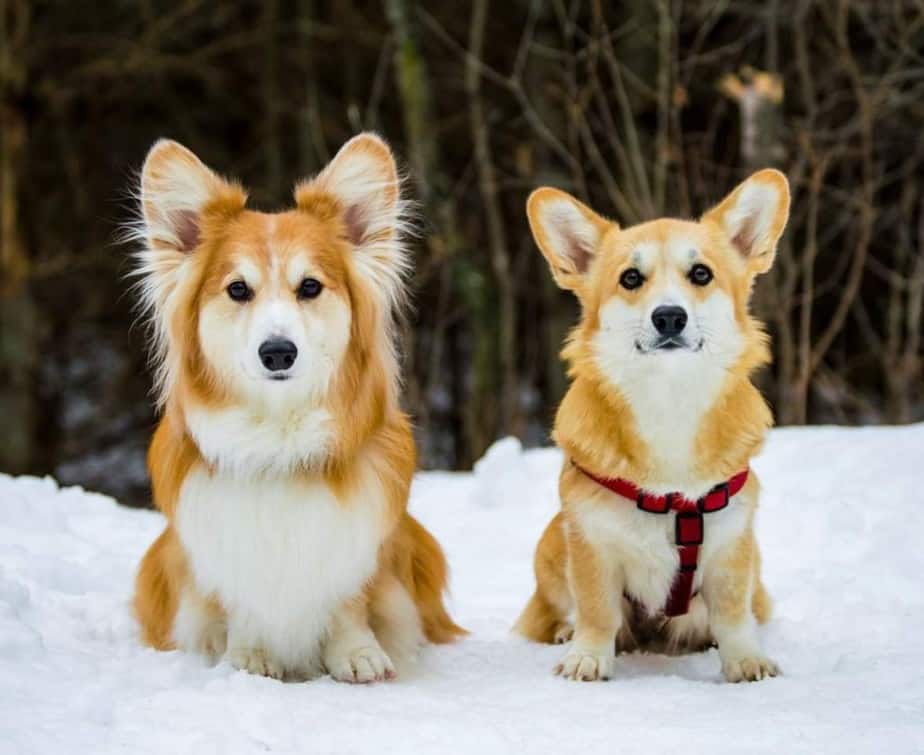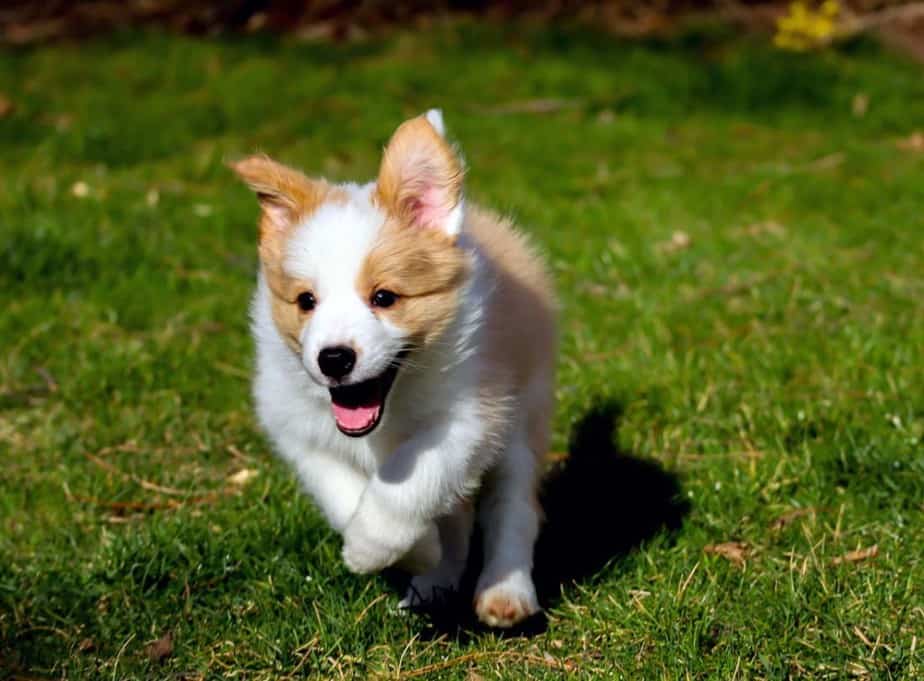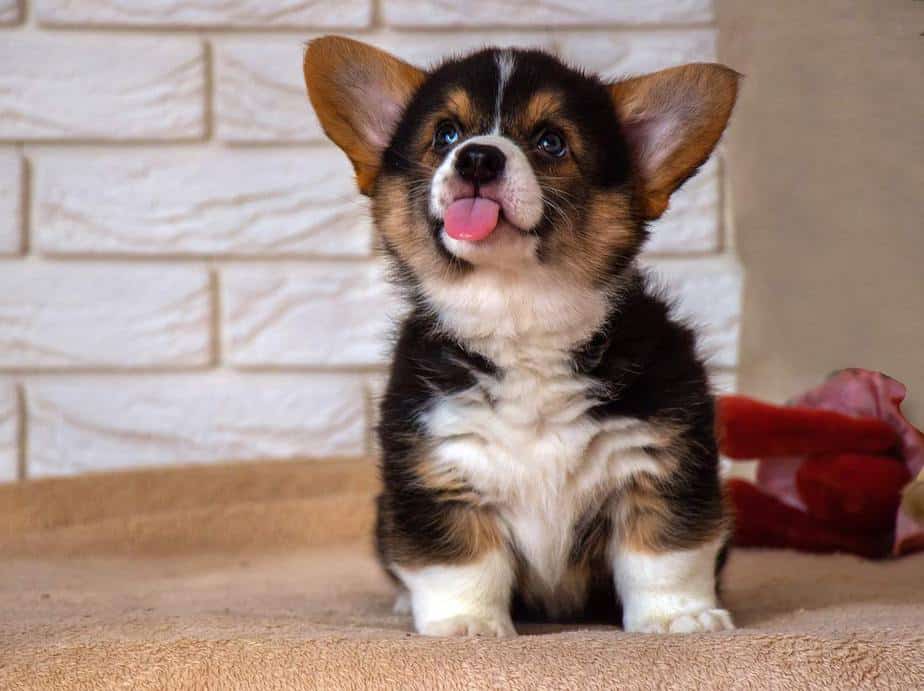If you’ve seen a fluffy Corgi before, you may have asked yourself if they’re a mix breed, with a Pomeranian perhaps. But it’s most likely that you have seen a purebred Pembroke Welsh Corgi, but one that’s exhibiting the Corgi fluff gene.
The “fluff” gene is recessive, meaning it’s less likely to occur in the breed. Sometimes only one or two Corgis in a litter will turn out to be a fluff, and for that to happen, both Corgi parents need to carry the gene.
Because of selective breeding, and the “fluff” gene being considered undesirable, fluffy Corgis are only becoming rarer. Unless of course you track down a breeder who is bucking the trend and is actively breeding the fluffy Corgi.
If you do have a fluffy Corgi, they would have needed both their parents to carry the gene, though not necessarily be a fluffy themselves.
And while it is rare to exhibit the fluffy trait, it’s a gene that is common throughout the Pembroke Welsh Corgi bloodline.
Is My Corgi a Fluffy?
Early on in your Corgi’s life, you will be able to tell if they are going to be a fluffy or not.
By 4-to-6 weeks a fluffy Corgi will show signs of a longer, softer, and fluffier coat.
As they grow, excess feathering will grow on their ears, chest, legs, and feet.
It can be a little tough to see early on depending on the coat of the other pups in the litter, though sometimes it will be very obvious. If you don’t have the litter to compare to, you will need to wait and watch for the fluff to reveal itself.
Here is a good comparison of the two, although these beautiful Corgis are both adults.

Corgis can have a variety of hair feel, some being soft as silk, while others a little more course.
If by two months your puppy isn’t showing signs of a longer, softer, and fluffier coat, then you almost certainly have a Corgi without the fluffy gene, which of course is nothing to be sad about. They’re both gorgeous dogs!
Pros and Cons of a Fluffy Corgi
If you have a fluffy you will notice they don’t shed, or if they do, it’s minimal. This is great if you don’t like hair everywhere, but not so great if you don’t enjoy spending lots of time brushing your dog.
Their coats are very dense, and the fluffy corgi will require you to be diligent in brushing their coat daily, so as to avoid matting.
They will also require light trimming and shaping as their coat grows, especially around their bottoms to stop messes.
Regular baths will also be required to ensure their coats are clean and their skin is healthy. Here is our guide to bathing a Corgi.
And if their coat ever gets wet, have a brush handy, because those mats can turn into a nightmare!
Although many breeders actively breed out the recessive gene, there is no health issues associated with a fluffy Corgi.
Also, if you ever were planning on entering your Corgi into the show ring, you won’t be able to if it’s a fluffy, as it’s seen as an undesirable trait.
Some Corgi breeders will even get a little upset with you if you ask them for a fluffy. When a fluffy does occur in a breeder’s litter, oftentimes they will actually discount the price on the puppy, as they see them as less desirable.
Outside of breeding and show rings, the fluffy Corgi can be very desirable, as they’re as cute as cupcakes! Though they will require a little extra work.
The difference between a fluffy Corgi and a non-fluffy Corgi
Most regular Pembroke Welsh Corgis have a waterproof coat. They’re double-coated, with a thick undercoat and longer topcoat.
The topcoat is called the “guard coat” and provides protection to the “undercoat”, which is soft and keeps your Corgi warm.
The thick undercoat is what is responsible for the heavy shedding. Non-fluffs will shed continuously and shed heavily twice a year, requiring regular brushing.
Brush your non-fluff at least three times a week and bathe them once every three to four weeks.
You will need to ensure your Corgi has a healthy diet to maintain a healthy coat.
Many Corgis have a “fairy saddle” on their backs. A change in thickness and direction of hair growth creates the marking and brought about the Welsh legend.

Will Corgi Puppy’s Color Change?
A Corgi puppy will go through a few coats of hair and through this process, their coloring will change.
It can be difficult to tell how they will turn out from an early age, but they can dramatically change in color by the time they reach adulthood.
Within 3 to 4 months owners will have a good idea of how their Corgi will look when they’re older. By 6 months they will be well on their way to their final coloring, and by two to three years, they will have reached their full coloring.
How their color changes will depend on which coloring the Corgi has.
Corgis come in a variety of colors, including red and white, sable, black-headed tri, and red-headed tri.
They usually have white markings exhibited on the legs, chest, neck, muzzle, and belly.
This website has a good range of photos of the different colored Corgis: https://www.cowboyscountrycorgis.com/different-colors-of-the-corgi
If you have a black-headed tri, any black on their face will likely remain, however as they age, they may take on more of a fawn color.
If you have a red-headed tri, the red coloring may become more dominant as they get older, and they will lose much of their black puppy colors.
Daylight affects on the Corgi coat
In the colder months, the days become shorter and your Corgi will produce a denser, warmer coat.
If a Corgi is kept inside a lot, their coats will respond, and mimic this shortened day response.
And then as the days get longer again, they will shed their long coat.
Final Word
If you do have a fluffy Corgi, then consider yourself lucky! You have a rare dog on your hands. Of course, that comes with the added responsibility of taking care of their fluffy coat.
And if you don’t have a fluff, then you still have a beautiful dog who needs slightly less work on their coat – although not by much!




